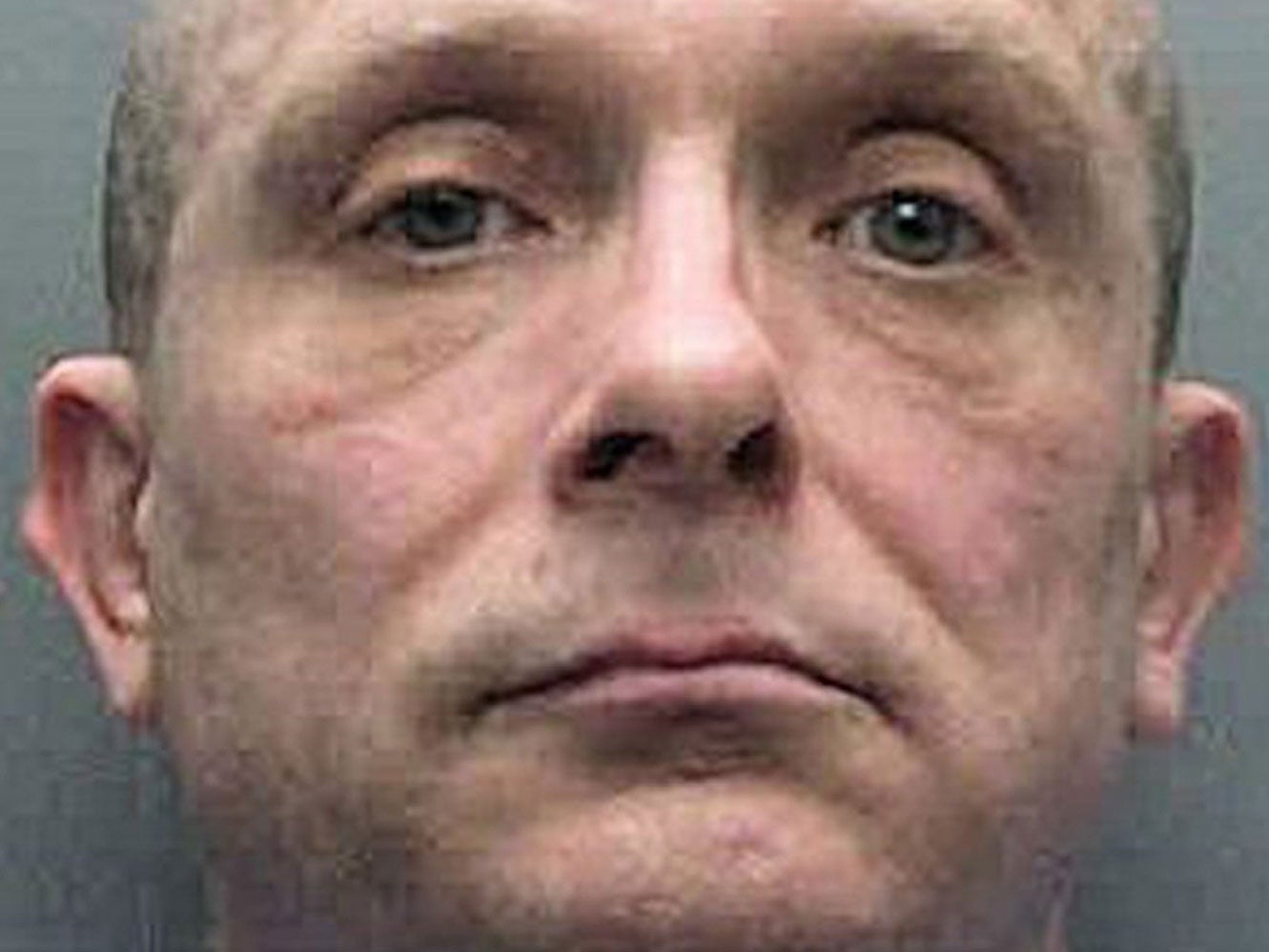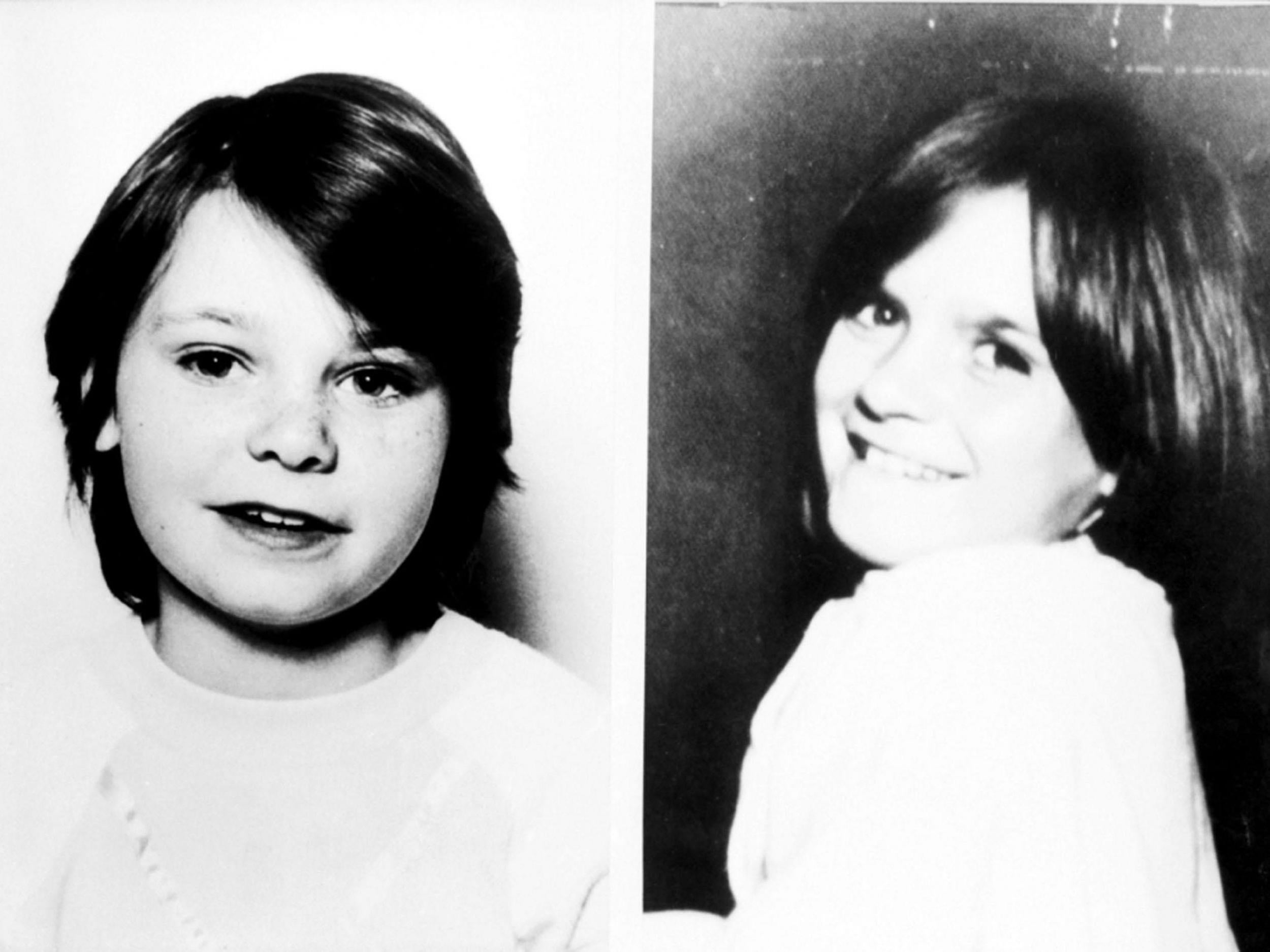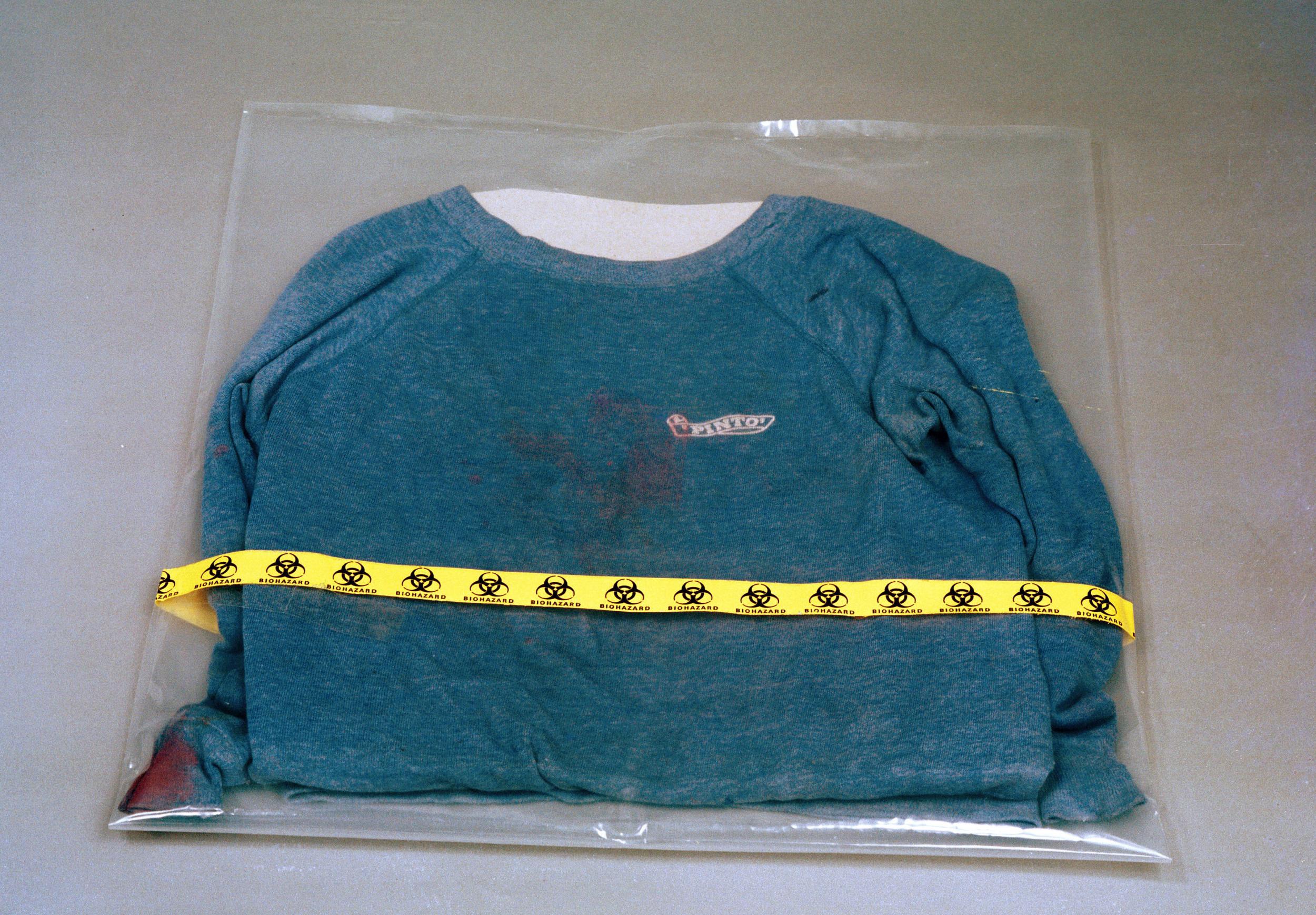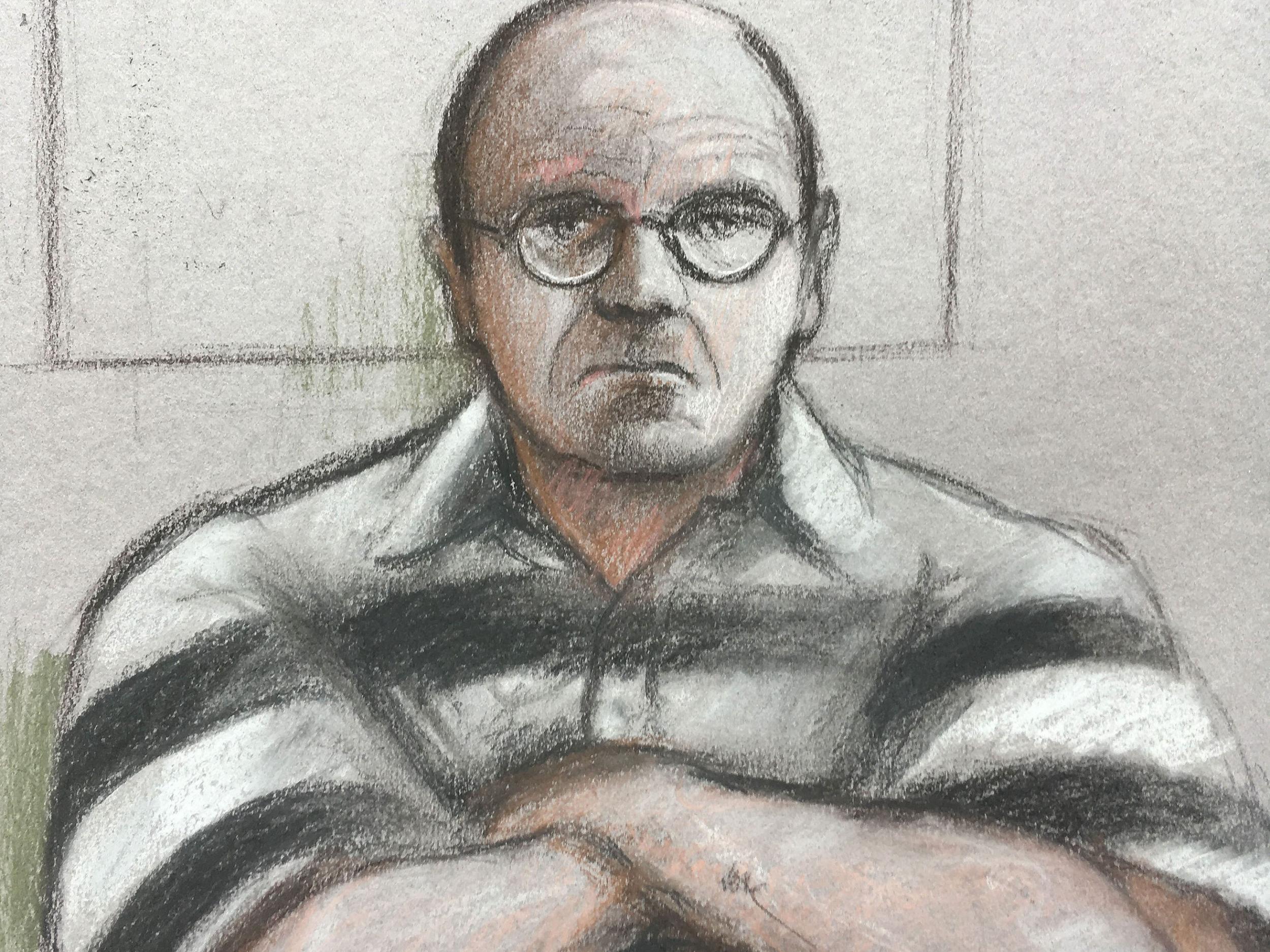Babes in the Wood murders: Did blunder over timings allow killer Russell Bishop to escape justice and strike again?
Three years after being cleared by a jury of killing nine-year-olds Karen Hadaway and Nicola Fellows, the paedophile abducted, strangled, and sexually assaulted a seven-year-old girl

Babes in the Wood murderer Russell Bishop may have escaped justice to strike again because a blunder over timings “tied down” the original prosecution to a timeline that allowed the paedophile killer to walk free, it has emerged.
In 1987 it took a Lewes Crown Court jury just two hours to clear Bishop of the charge of murdering nine-year-olds Karen Hadaway and Nicola Fellows in Wild Park, Brighton, on October 9 1986.
Three years later, in February 1990, Bishop snatched a seven-year-old girl off the street, drove her to Devil’s Dyke in Sussex, strangled her, sexually assaulted her and left her for dead.
He was given a life sentence for this sex attack, but ever since, questions have been asked about how Bishop was allowed to escape justice for the Babes in the Wood murders and strike again.
Now that Bishop has finally been convicted of the murders of Karen and Nicola, it can be reported that the original proceedings against him may have suffered from a flawed timeline that allowed the defence to claim the prosecution case had been “shot to pieces”.
The 2018 prosecution effectively reversed the 1987 prosecution’s position on timings.
In February 1987 at an old-style committal hearing where evidence was presented to magistrates before the case was sent for a crown court trial, the prosecution put forward the scenario that Bishop killed the girls in the park at some time between 5.15pm and 6.30pm.
Saying Bishop was seen at about 5pm and there was a gap before he was spotted emerging from the park at about 6.30pm, the prosecution pointedly asked: “Where was he and what was he doing during that hour?”

The suggestion that Bishop killed the girls between 5.15pm and 6.30pm was repeated ten months later when the trial proper opened at Lewes Crown Court. The jury was told: “He was in or near the park and the vicinity between 5.15pm and 6.30pm, the very period in which the two girls went missing.”
But the defence was then able to present a string of witnesses who said they had seen Karen and Nicola alive at around 6.30pm, when according to the prosecution evidence they should have been dead having been killed by Bishop.
Ivan Lawrence QC, defending, told the jury: "If the girls were alive at 6.30pm, then an already weak and feeble prosecution case is shot to pieces."
The prosecution highlighted inconsistencies in the accounts of these defence witnesses, but their evidence seems to have been highlighted in the summing up of Mr Justice Schiemann, who was officiating at his first murder trial.
In 2018, in a ruling about evidence admissibility, Old Bailey judge Mr Justice Sweeney recalled that in summing up at Lewes Crown Court in 1987 Mr Justice Schiemann had: “Directed the jury that unless they were sure first, that the girls were dead by 6.30pm … they should acquit.”
It is noticeable that when the 2018 trial started, the successful prosecution case effectively reversed the positions on the 1987 timeline.
Prosecutor Brian Altman QC presented evidence that the girls were alive at 6.30pm, in the same way the defence had done in 1987.
Where Mr Altman differed from the 1987 defence team, however, was in telling the jury, not that the prosecution was shot to pieces, but instead that “the defendant must have turned back into Wild Park”.
Outside court, Detetctive Superintendent Jeff Riley, who led the cold case investigation that finally brought Bishop to justice for the Babes in the Wood murders, said: “Our prosecution has changed because we haven’t tied ourselves down to particular times that I think the original prosecution did. They, I think, tied themselves down to the fact that the girls were dead by 6.30pm.
“We are no longer sticking with [that] timeline.”

In fact the 1987 defence witnesses returned to court in 2018, but as prosecution witnesses, while giving the same evidence on timings.
Their recollections of seeing the girls were combined with the evidence of two brothers who saw Bishop on the same stretch of the Lewes Road near the park, at the same time, about 6.30pm.
“That was when contact was made,” said Mr Altman, summarising the 2018 prosecution scenario. “He turned back, returned into the park and took those two little girls with him.
“We will never know what kind of artful deception he practised to persuade them to come with him.”
This scenario also seemed to fit better with what the leading forensic pathologist of the 1980s, the late Dr Iain West, had said at the first trial.
In 1987, when asked by the defence to guess the time of death from the contents of the girls’ stomachs at post-mortem, Dr West placed it between 7pm and 8pm, while cautioning that this was a very inaccurate method of establishing such timings.
A possible irony is that while appearing to shift on timings, the 2018 prosecution stuck to the same original assertion, also mentioned in the 1987 judge’s summing up, that a discarded Pinto-branded sweatshirt was a crucial piece of evidence in proving or disproving Bishop’s guilt.
Yet in the years that followed the acquittal, it was this strand of the prosecution case that attracted the most criticism, for a supposed failure to prove the sweatshirt was linked to Bishop, the girls and the murder scene.
Sussex Police has had to face decades of suggestions that they had somehow botched the handling of forensic evidence around the sweatshirt, which was presented in 1987 as having yielded damning fibre and plant evidence, only to be attacked as totally inconclusive by the defence.
The impression may have been reinforced by extraordinary scenes during the 1987 trial. These included a forensic scientist taking his own notes in the witness box because he thought he was being accused of evidence tampering, and being pinned against the wall by an infuriated senior detective after he left the courtroom.
But in fact, when the case was heard again in 2018, it became clear that the forensic samples taken as ‘tapings’ in 1986 had been so carefully handled by police and so well preserved by scientists that Mr Altman could present them as a “time capsule” that proved Bishop’s guilt.
Independent expert Rosalyn Hammond could testify that while DNA evidence was in its infancy in 1986, awareness of the dangers of forensic cross-contamination was not, and exhibits had therefore been handled very carefully.
This paved the way for the prosecution to be able to use the original 1986 samples to get DNA that linked Bishop to the incriminating sweatshirt and to Karen’s exposed left forearm with only a one-in-a-billion chance of error.

Some observers maintain that it was the fact that advanced DNA profiling had not been invented in 1986 that allowed Bishop to walk free.
Jim Hatley, the local newspaper reporter who covered the 1987 proceedings, told The Independent: “The science hadn’t advanced enough: nobody could prove the Pinto was Bishop’s and that he was wearing it at the time of the murders.
“And they couldn’t get a confession out of him, which would have been the usual thing to do in those days.”
Sussex Police said the 1987 decision on timings would have been made jointly by police, CPS and senior prosecuting counsel.
Declining to criticise his police and prosecution predecessors, Mr Riley said: “I am not clear why they went for that time frame.
“It’s very difficult for me to comment on historical practices around setting times around murder scenes, but we certainly wouldn’t do that now.
“The issue with any investigation is that people can be quite vague around times. I suspect it was the vagueness of people around times that led to them running the case they did back in 1986, 1987.”
He also pointed out that no-one but the 1987 jurors can know what swayed them, adding: “I wasn’t in the jury room, I don’t know what they thought, I don’t know what they considered.”
He added: “I don’t think you can lay the blame at any one individual’s door for whatever reason the jury weren’t able to convict in 1987.”
Mr Riley stressed that he had been impressed by how well the original 1980s investigation had been run.
He said: “When I first took on the investigation, one of the first things I did was read through the original papers on the case and actually what struck me was what a thorough and professional investigation it was. We have been able to build on that original investigation.”
He added: “There were reviews of the prosecution after the acquittal and the reviews suggested the prosecution was done properly.”
A Sussex police spokeswoman said: “We have never forgotten this investigation and never given up on it.”
Nigel Pilkington, the senior district crown prosecutor for CPS South East said: “I wouldn’t in any way be critical of what happened in 1987. It was a very difficult case [then].”
He agreed that the 1987 prosecutors did not have DNA techniques that are available in 2018, and added that in 1987 a key witness, Bishop’s partner Jenny Johnson, changed her evidence over the vital Pinto sweatshirt.
She initially signed a police statement saying the sweatshirt belonged to Bishop, but in court she insisted the top was not his.
“That proved the biggest difficulty,” said Mr Pilkington, “Because if the jury had been satisfied about the sweatshirt, they may well have been satisfied [about Bishop’s guilt].”
He added that both in 1987 and 2018, the prosecution only had to prove that Bishop murdered the girls, not when he killed them.
“We don’t actually know when he killed them,” said Mr Pilkington. “Only Russell Bishop knows that.”
